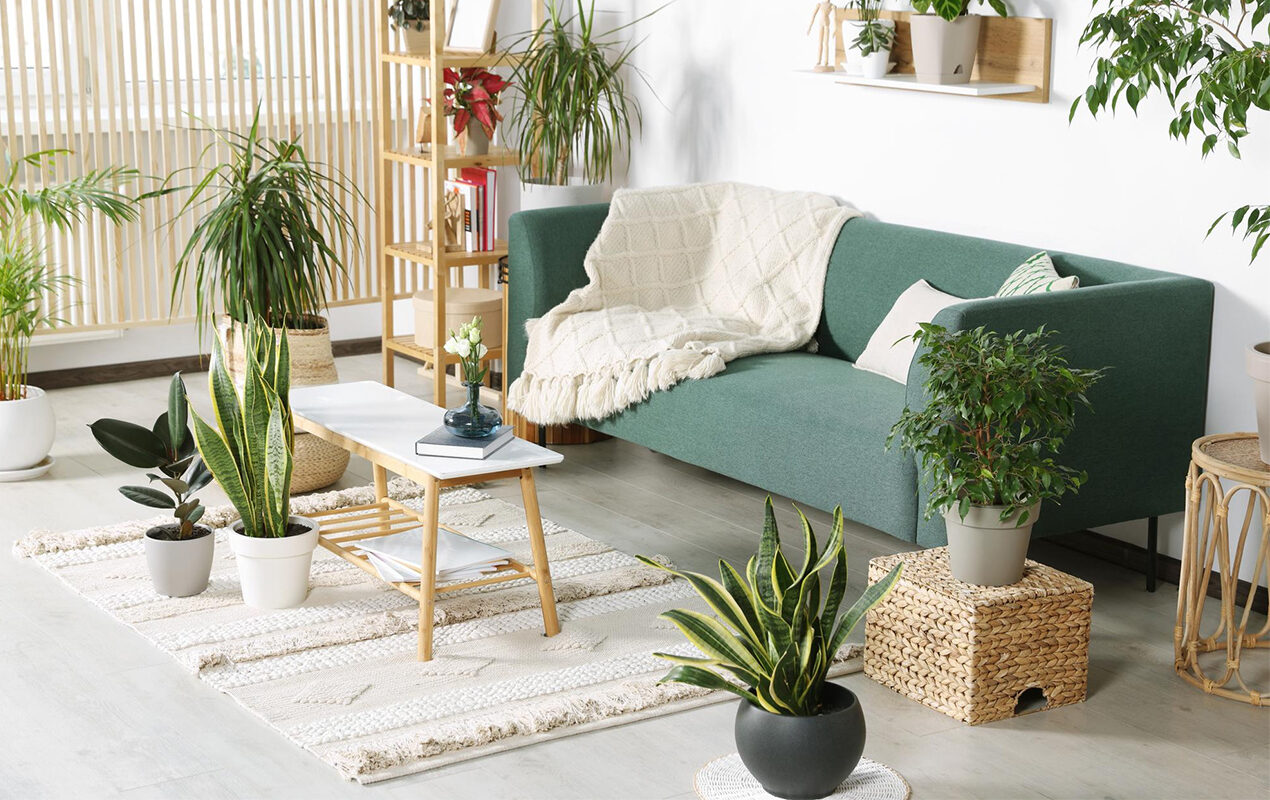Small apartments, studios, and compact homes are becoming increasingly popular. They’re not only practical and cost-effective but also offer an opportunity to create a cozy and sustainable space following the principles of eco design. How can you combine environmental friendliness, functionality, and aesthetics in a small area? Let’s explore in this article.
What Is Eco Design?
Eco design is an approach to interior design that considers the principles of sustainable development: minimizing waste, using natural materials, improving energy efficiency, opting for multifunctional items, and caring for the health of the home’s occupants.
Key Principles of Eco Design:
-
Use of environmentally friendly and non-toxic materials
-
Minimalism in consumption and aesthetics
-
Recycling and reuse
-
Energy efficiency
-
Biophilic approach: connecting with nature
Why Is Eco Design Especially Important for Small Spaces?
In small spaces, every design decision matters. Clutter, toxic materials, and poor ventilation have a stronger impact on comfort and well-being. Eco design helps not only to make a space more “green” but also to optimize it effectively.
Compact Without Compromise: Combining Functionality and Sustainability
1. Multifunctional Furniture
Multifunctional furniture is the key to using space efficiently. It helps reduce clutter and decreases the need to produce, transport, and dispose of multiple items.
Examples:
-
Bed with built-in storage drawers
-
Fold-out table that doubles as a workspace
-
Stools with inner storage
-
Convertible sofa beds
2. Minimalism: Less Is More
Minimalism perfectly complements eco design. Fewer items mean fewer resources used for production, shipping, and disposal. Keep only what you need and what brings you joy.
Benefits of Minimalism:
-
Less cleaning
-
Easier to ventilate and light the room
-
Lower levels of dust and allergens
-
More visual space
3. Natural and Recycled Materials
Prioritize eco-friendly and safe materials:
-
Furniture made from certified wood or bamboo
-
Textiles made from organic cotton, linen, or wool
-
Flooring made from cork, reclaimed wood, or parquet
-
Recycled materials (e.g., glass, metal)
Table: Comparison of Traditional and Eco-Friendly Interior Materials
| Interior Element | Traditional Materials | Eco-Friendly Alternatives |
|---|---|---|
| Flooring | PVC laminate | Cork flooring, reclaimed wood |
| Walls | Vinyl wallpaper | Water-based paint, eco wallpaper |
| Furniture | Plastic, particleboard with VOCs | Certified wood, bamboo |
| Textiles | Synthetics | Linen, organic cotton |
| Lighting | Halogen bulbs | LED lights, solar-powered fixtures |
Eco-Friendly Lighting and Ventilation
1. Maximize Natural Light
Good lighting is especially important in small spaces. Use light-colored finishes, mirrors, and translucent dividers to enhance natural light.
Tips:
-
Avoid heavy curtains — opt for linen or cotton
-
Place mirrors opposite windows
-
Use glass doors or dividers for zoning
2. Energy-Efficient Lighting
Switching to LED lights or solar-powered lamps reduces energy consumption and heat output.
3. Natural Ventilation
Clean air is a vital part of eco design. Ventilate regularly, add houseplants, and avoid plastics and synthetic surfaces that may emit toxins.
Green Touches in Your Interior
Even the smallest apartment can feel connected to nature. Biophilic design helps reduce stress, improves concentration, and makes your home feel more alive.
Ideas:
-
Houseplants: succulents, snake plants, ferns
-
Vertical mini gardens on walls
-
Moss wall panels
-
Natural decor elements: wood, stone, woven baskets
Sustainable Storage: Clutter-Free Without Plastic
Storage in a small apartment is a challenge — but also an opportunity to be mindful. Avoid plastic bins and disposable organizers.
Alternatives:
-
Boxes made of recycled cardboard
-
Woven baskets made from willow or jute
-
Glass jars for dry goods
-
Wooden or metal hooks and shelves
Recycling and DIY Approach
Make recycling part of your design process:
-
Restore old furniture
-
Create shelves from wooden pallets
-
Use glass bottles in decor
-
Sew pillowcases from old clothes
Advantages of DIY Design:
-
Saves money
-
Minimizes waste
-
Makes the interior unique
-
Creative satisfaction
Tips for Designing a Small Eco Apartment
Top 10 Practical Tips:
-
Choose light colors
-
Use mirrors to visually expand the space
-
Buy furniture with built-in storage
-
Opt for natural fabrics and paints
-
Add greenery instead of plastic decor
-
Choose solid wood over laminate
-
Plan layered lighting
-
Keep surfaces clear and clutter-free
-
Support handmade and local products
-
Use swap platforms (like “freecycle” or “give away” apps)
Eco design for small spaces isn’t just a trend — it’s a conscious choice for a healthier, more aesthetic, and environmentally responsible lifestyle. Fewer things, more value. Natural materials, efficient organization, and a connection with nature make small-space living not only comfortable but also deeply inspiring.

Leave a Reply